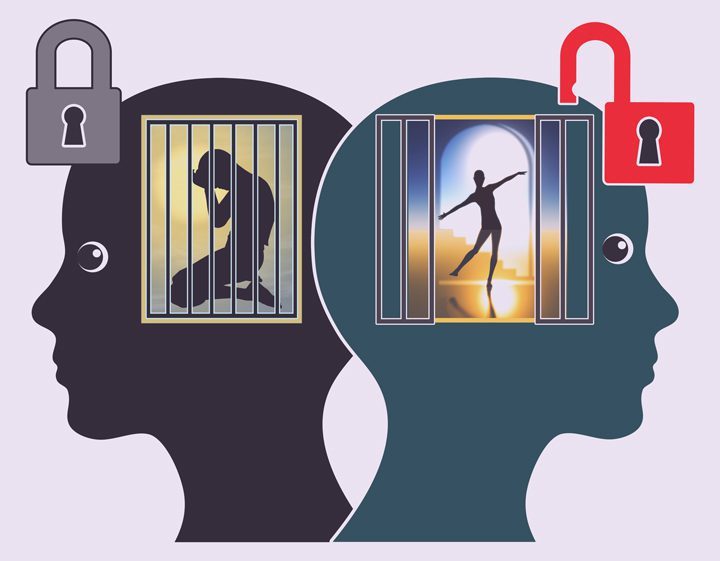
The roots of trauma run deep.
On the surface, you may think you’re handling everything just fine, but if there’s unresolved or unaddressed trauma, it’s crucial to recognize how it affects your entire being—mentally, emotionally, physically, and spiritually. In addition, researchers acknowledge that substance abuse is often both a symptom of prior trauma and a catalyst of current trauma.
Statistics from the National Council for Behavioral Health indicate more than 220 million people in the U.S.—as much as 70 percent of the population—have experienced at least one traumatic event in their lives.
Harvard Health reports that people who experience more than three negative childhood experiences—also referred to as adverse childhood experiences or ACEs—have a higher risk of chronic physical and mental health conditions as adults. The 10 primary ACEs are:
- Emotional abuse
- Physical abuse
- Sexual abuse
- Emotional neglect
- Physical neglect
- Mental illness within the household
- Parental separation or divorce
- Substance misuse within the household
- Witnessing domestic violence
- Incarceration of a household member
These incidents also contribute to trauma when experienced later in life.
Additional traumatic events include great loss or grief, divorce, a family member’s sudden death, experiencing war or terrorist conditions, managing or caring for someone with a serious health condition, extreme poverty, PTSD from an accident or military service, and other circumstances. Unfortunately, women often have a strong correlation between trauma and addiction.
There are many effective forms of treatment for trauma, including cognitive and dialectical behavioral therapy, healing touch, talk therapy, EMDR therapy, and somatic experiencing. Somatic experiencing may be a relatively new alternative therapy, but it’s showing great promise for helping people release the intense physical effects of trauma.
How Somatic Therapy Works
The Harvard experts believe there’s a “direct biological effect that occurs when your body undergoes extreme stress.” Adrenaline, cardiovascular activity, and heightened muscular reaction all surge during stressful times, forcing the nervous system to be more hyperactive, which physicians agree causes “wear and tear on the body, just as it would in a car where the engine was constantly revving and racing.” This is what it means to have deep-rooted trauma trapped in the body. Continual stress produces more inflammation, which is linked to various medical conditions.
Somatic experiencing, or SE, is a method to relieve this hyper state, including long-held tension that may be unnoticeable on the surface. Soma is a Greek term for “living body.” People might be “stuck” in the nervous system’s protective fight, flight, or freeze reactions. Through somatic experiencing, therapists combine behavioral modifications with physical applications to help people release negative stress arousal energy and improve their self-regulation capabilities.
This approach was developed by Dr. Peter Levine in the late 1990s. Once a stress consultant for NASA and author of Waking the Tiger: Healing Trauma, he observed that wild animals don’t experience long-term effects after being threatened by predators. Instead, once the immediate threat passes, animals expels the arousal energy through techniques such as deep breathing, shaking, and stretching.
Humans, on the other hand, have more difficulty letting go of stressful events, especially when the event is ongoing. Behaviors and emotions such as anxiety, depression, guilt, shame, aggression, hypervigilance, insomnia, and others often emerge as ways to handle the traumatic episode. These reactions amplify the stress response, making it more challenging to not only deal with traumatic shock, but also acknowledge and move beyond it.
Levine’s Somatic Experiencing Trauma Institute trains SE practitioners to safely guide people through measured amounts of “traumatic material” and monitor their resulting physical responses. For example, notes Good Therapy, a change in posture or breathing might be a somatic sensation, as are other reactions the practitioner can’t see, “such as feelings of heaviness, tightness, or dizziness.” The SE practitioner then teaches people to recognize the difference between “sensations associated with trauma and those that are a source of strength and comfort.”
The coping mechanisms learned through somatic experiencing often include:
- Releasing heightened sensations through subtle movements, such as focused muscle relaxation, or more involved methods, like yoga. Concentrated breathwork might also be used.
- Encouraging the use of this psychobiological method to develop a stronger tolerance to key triggers and release suppressed emotions.
- Acquiring skills to self-regulate immediate stress responses with these new techniques, thereby reducing the overload on the nervous system to remain in fight, flight, or freeze mode.
Find Somatic Healing at Cottonwood Tucson
Any disconnect between the mind, body, and spirit impedes full healing. As part of Cottonwood’s continuum of care for women and men suffering from trauma, substance abuse, co-occurring disorders, and process addictions, somatic experiencing is often combined with other forms of psychotherapy and physical therapies to promote holistic healing. Holistic modalities are at the heart of our treatment philosophy, as we understand the importance of whole-being wellness.
Our certified somatic experiencing practitioners completed an intense three-year training program. They offer SE in both group and individual sessions, including a special women’s group for trauma survivors. Contact one of our admissions professionals to learn more.







